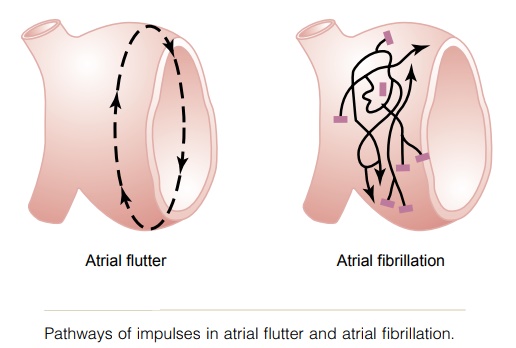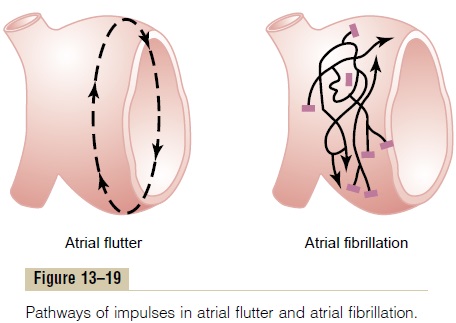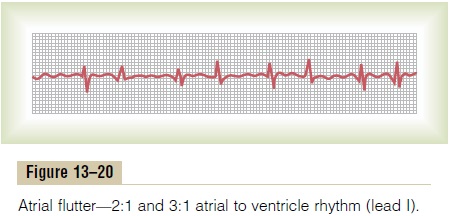Chapter: Medical Physiology: Cardiac Arrhythmias and Their Electrocardiographic Interpretation
Atrial Flutter

Atrial Flutter
Atrial flutter is another condition caused by a circus movement in the atria. It is different from atrial fibril-lation, in that the electrical signal travels as a single large wave always in one direction around and around the atrial muscle mass, as shown to the left in Figure 13–19. Atrial flutter causes a rapid rate of contraction of the atria, usually between 200 and 350 beats per minute. However, because one side of the atria is contracting while the other side is relaxing, the amount of blood pumped by the atria is slight. Furthermore, the signals reach the A-V node too rapidly for all of them to be passed into the ventricles, because the refractory periods of the A-V node and A-V bundle are too long to pass more than a fraction of the atrial signals. There-fore, there are usually two to three beats of the atria for every single beat of the ventricles.

Figure 13–20 shows a typical electrocardiogram in atrial flutter. The P waves are strong because of con-traction of semicoordinate masses of muscle. However, note in the record that a QRS-T complex follows an atrial P wave only once for every two to three beats of the atria, giving a 2:1 or 3:1 rhythm.

Related Topics